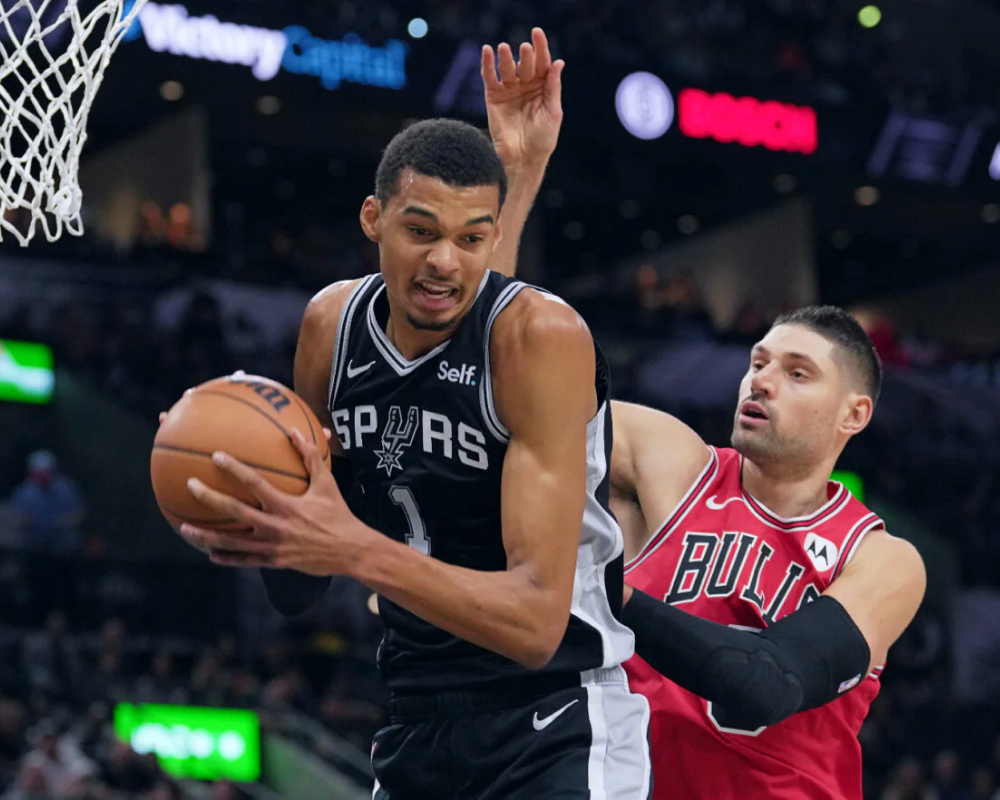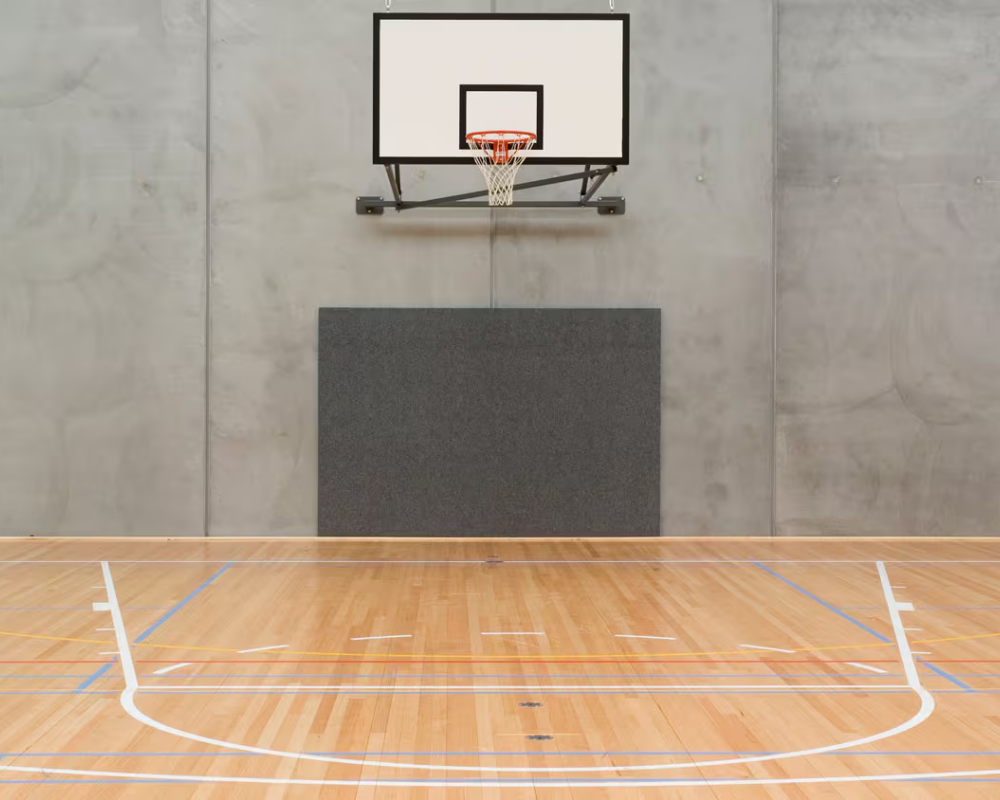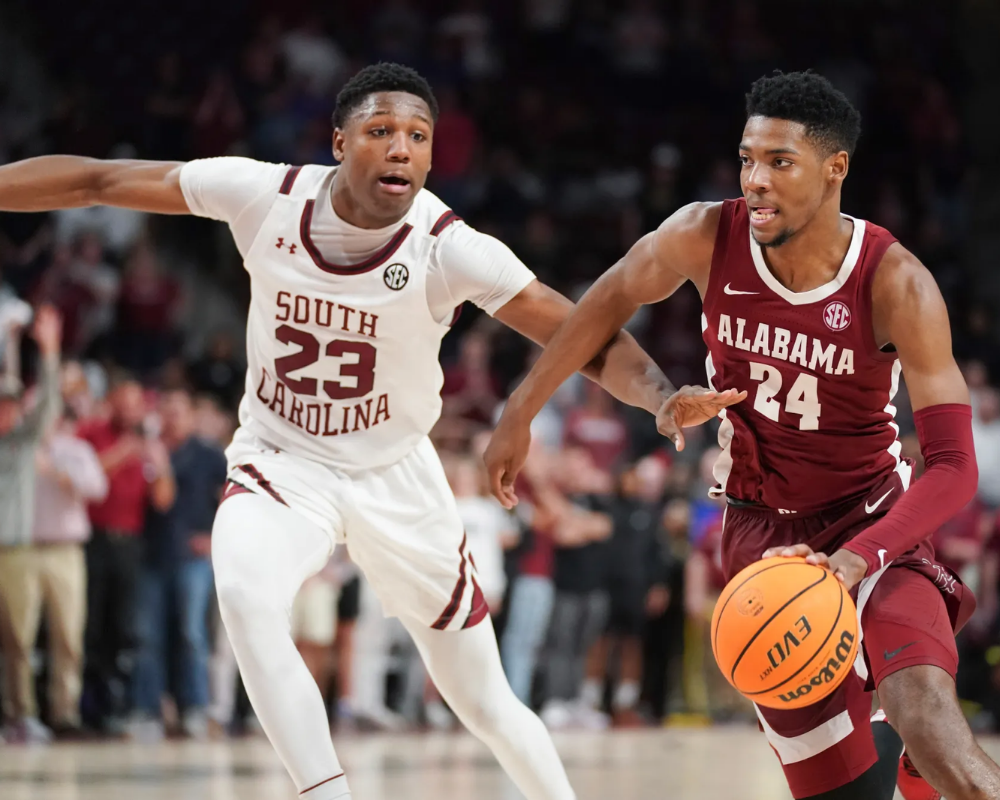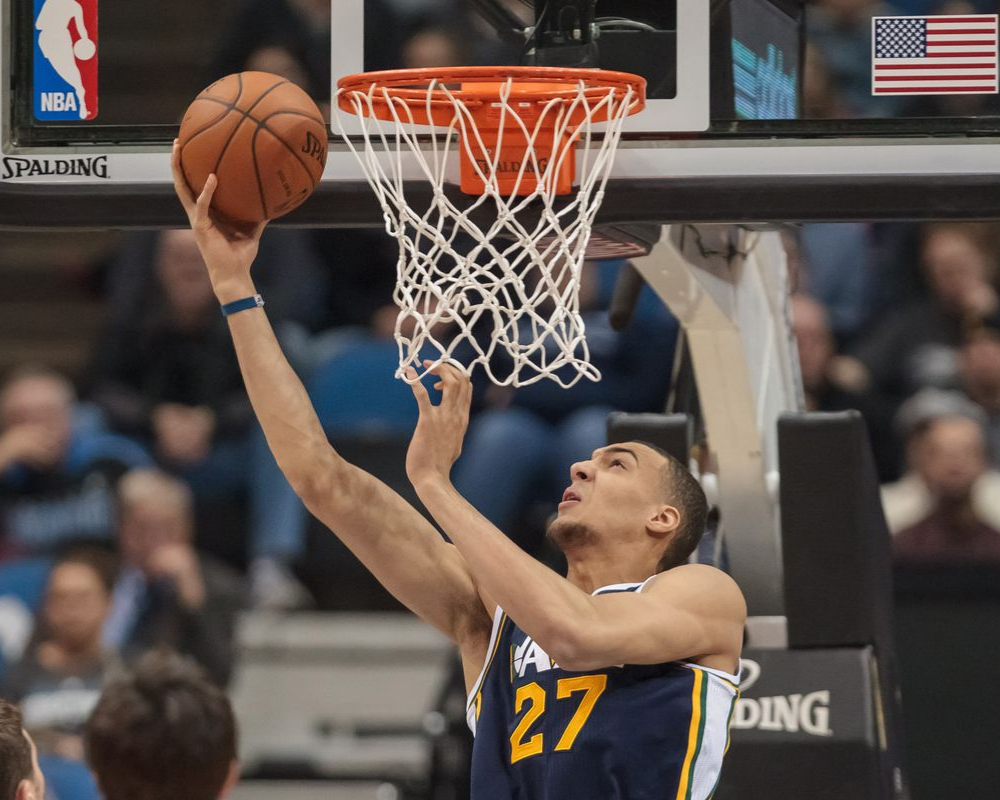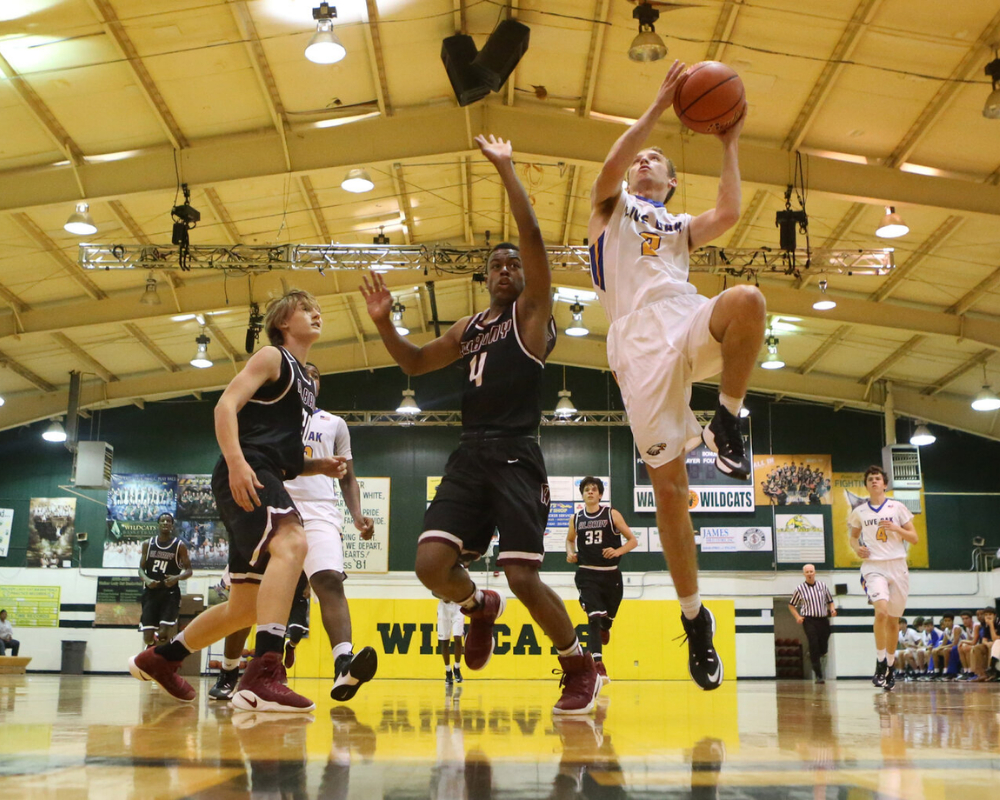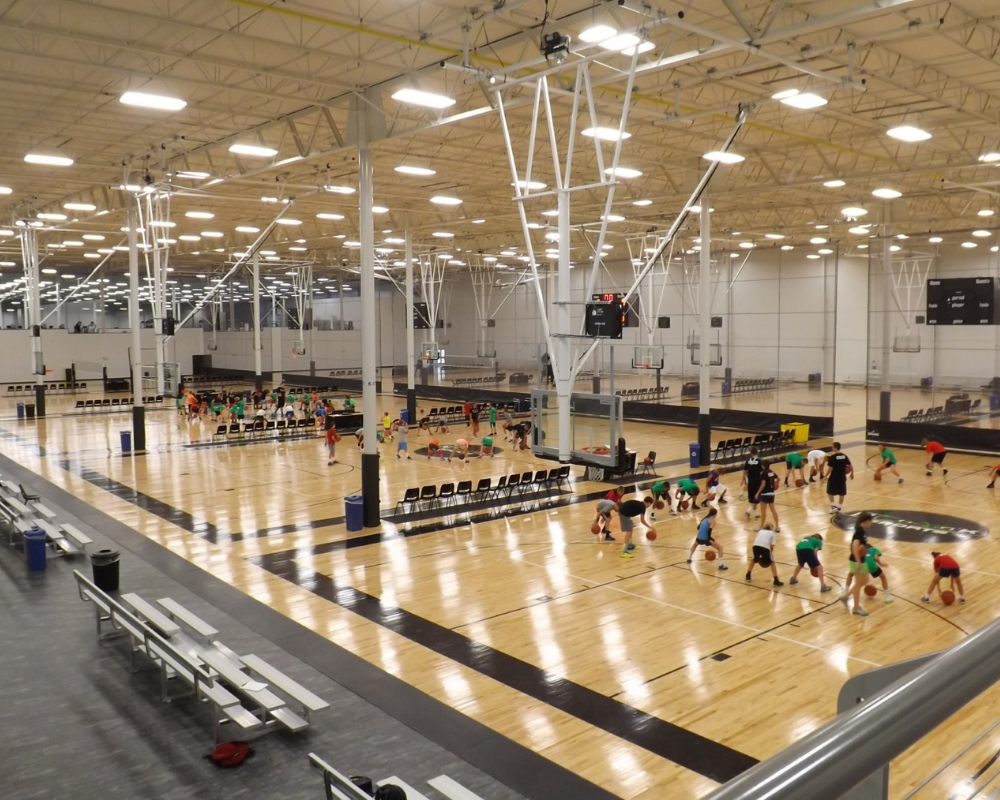Understanding the structure and timing of a college basketball game is essential for both avid fans and newcomers to the sport. How long a college basketball half lasts might seem like a straightforward question, but it encompasses more than just a figure. This article delves into the specifics of game duration, exploring not only the length of a half but also how additional elements like timeouts, halftime, and overtime can influence the total game time. Stay tuned to uncover the intricacies of college basketball timing.
Understanding College Basketball Timings
College basketball, with its vibrant atmosphere and passionate followers, operates within a distinctive framework of rules and timings that sets it apart from professional leagues. The most fundamental aspect to grasp is the division of play into two halves, each lasting 20 minutes, rather than the four quarters observed in the NBA. This division significantly influences the pacing and strategic planning of the game. Coaches and players must adapt their strategies to manage stamina and fouls effectively over these longer periods of play.
Another critical timing aspect in college basketball is the shot clock. Set at 30 seconds, it dictates the maximum amount of time a team can possess the ball before attempting a shot. This rule aims to prevent teams from stalling the game and encourages a more dynamic and fast-paced gameplay. The shot clock resets to 20 seconds if the ball hits the rim and the offensive team regains possession after an attempted shot, adding a layer of strategy to offensive rebounds and shot selection. Understanding how the shot clock operates is essential for appreciating the tactical nuances of college basketball.
The halftime interval in college basketball is also noteworthy, extending for 15 minutes. This break allows teams to regroup, strategize, and rest, which is crucial in games that are often high-stakes and physically demanding. The management of this time can be pivotal to the outcome of a game, as coaches have the opportunity to make adjustments based on the first half’s performance. Recognizing the importance of these timings helps fans and players alike appreciate the depth and complexity of college basketball.
- Division into two 20-minute halves
- 30-second shot clock
- 20-second shot clock reset on offensive rebounds
- 15-minute halftime interval
- Timing strategies for managing player stamina and fouls
Understanding the Structure: The Length of College Basketball Halves
The rhythm and pace of college basketball are distinct, not only in its energetic gameplay but also in the structural timing that defines the halves. Unlike its professional counterpart, the NBA, which plays four quarters, college basketball is divided into two halves. Each half is 20 minutes long, making the total time of gameplay 40 minutes, excluding timeouts, halftimes, and any potential overtime. This duration is consistent across both men’s and women’s games in the NCAA (National Collegiate Athletic Association), ensuring a uniform playtime framework for collegiate athletes.
This 20-minute half model is significant because it influences both coaching strategies and player performances. Coaches must adeptly manage their team’s stamina and strategic plays within this timeframe, often leading to a dynamic shift in gameplay as the clock ticks down. For players, understanding the pacing and energy required for each half is crucial for maintaining peak performance throughout the game. The halftime interval, set at 15 minutes, provides a necessary respite for athletes, allowing them time to recuperate, strategize, and adjust their play based on the first half’s outcomes. The impact of this structured time on the game’s flow and strategy cannot be understated, shaping the very essence of college basketball.
Moreover, the concept of overtime adds another layer of excitement to college basketball. In the event of a tie at the end of the second half, periods of 5 minutes are played until a winner emerges. This potential for extended play time heightens the intensity of the game, pushing teams to their limits as they vie for victory. Overtime showcases the endurance and resilience of the athletes, further emphasizing the importance of time management and strategic planning throughout the regular halves.
Additionally, understanding the nuances of the game’s duration offers fans deeper insights into the tactical decisions made by coaches and the physical and mental resilience required by the players. As spectators or enthusiasts delve into the intricacies of college basketball timing, they gain a greater appreciation for the sport’s strategic depth and the athletes’ dedication.
- The NCAA governs college basketball timing, ensuring a standardized duration across games.
- Each half lasts 20 minutes, with a total game time of 40 minutes, not accounting for stoppages.
- The 15-minute halftime allows teams to rest and strategize for the second half of the game.
- Overtime periods extend the game by 5 minutes each until a winning team is determined.
- Time management and strategic gameplay are crucial elements influenced by the game’s structured timing.
In summary, the timing of college basketball halves is a foundational aspect that influences the game’s dynamics, strategies, and overall enjoyment. By delving into the details of how long a college basketball half lasts, one gains a deeper understanding of the sport’s structure, enhancing both the playing and viewing experience. Whether you’re a player, coach, or fan, appreciating the significance of each 20-minute half can enrich your engagement with college basketball.
Regulation Game Length Explained
The duration of a college basketball game is meticulously defined to balance competitiveness with the physical demands placed on student-athletes. Unlike professional basketball, which consists of four 12-minute quarters, the college game is divided into two halves. Each half is 20 minutes long, making the total regulation time 40 minutes. This structure is consistent for both men’s and women’s college basketball across the National Collegiate Athletic Association (NCAA), ensuring a uniform gameplay experience.
One might wonder how the game’s pace and flow are affected by this structure. The answer lies in the intensity and strategy that teams must employ within these time constraints. The 20-minute halves prompt teams to be more strategic in their play, often leading to a faster-paced game compared to the professional level. This pace is crucial in keeping the game engaging for fans and demanding for players, striking a balance between entertainment and athletic challenge.
It’s also important to note the role of timeouts and halftime in the overall duration of a game. Each team is allotted a certain number of timeouts per half, and there is a 15-minute halftime break. These breaks are critical for teams to rest, strategize, and adjust their gameplay. As a result, while the regulation time is 40 minutes, the actual duration of a college basketball game, including stoppages, typically extends to approximately two hours.
| Aspect | Men’s College Basketball | Women’s College Basketball |
|---|---|---|
| Halves Duration | 20 minutes | 20 minutes |
| Total Regulation Time | 40 minutes | 40 minutes |
| Halftime Duration | 15 minutes | 15 minutes |
| Typical Total Game Duration (with stoppages) | Approx. 2 hours | Approx. 2 hours |
| Timeouts per Half | Varies | Varies |
Understanding the regulation game length in college basketball provides insight into not just the rules of the game but also the strategy and physicality involved. Coaches and players must optimize their approach to each half, ensuring they can maintain a high level of performance throughout the game. The 20-minute halves encourage a dynamic style of play that is both challenging for the athletes and engaging for the spectators. Moreover, the strategic use of timeouts and the halftime break are crucial elements in the rhythm and outcome of the game, offering teams the opportunity to adapt their strategies to the unfolding contest.
Overall, the structure of college basketball games is designed to showcase the athletic prowess and strategic acumen of student-athletes, providing fans with a compelling and competitive spectacle. The interplay of regulation time, timeouts, and halftime creates a unique sporting experience that highlights the best of college athletics.
Overtime Rules and Duration
In college basketball, overtime is an extension of the game that occurs when the score is tied at the end of the second half. The rules and duration of overtime are critical for players, coaches, and fans to understand, as they can significantly impact the outcome of a game. Overtime is structured to ensure a fair and decisive end to a contest, providing each team with an equal opportunity to secure a victory. Unlike the regular periods of a game, which consist of two 20-minute halves, overtime periods are much shorter.
Overtime in college basketball consists of a single 5-minute period. If the score remains tied at the end of this period, the game continues into additional overtime periods, each lasting 5 minutes, until a winner is determined. This sudden-death approach keeps the intensity high and requires teams to be strategic and resilient. During overtime, the clock management, player stamina, and strategic fouling become even more crucial. Teams must also contend with potential player foul troubles, which can significantly influence game strategy and outcomes.
The rules regarding timeouts also change during overtime. Each team is allowed one timeout per overtime period, regardless of the number of timeouts they had remaining at the end of regulation. This rule ensures that both teams have an equal chance to regroup and strategize during the critical moments of overtime. Furthermore, team fouls are carried over from the second half, meaning teams can quickly find themselves in the bonus, leading to free throws for their opponents on subsequent fouls. This aspect adds an additional layer of strategy, as teams must balance aggressive defense with the risk of sending their opponents to the free-throw line.
Additional Insights on Overtime Strategy
Understanding the nuances of overtime rules and strategy can significantly impact a team’s approach to these critical minutes. Coaches often adjust their strategies, focusing on ball possession, shot selection, and defensive setups to capitalize on their opponents’ weaknesses. The intensity of overtime demands excellent physical and mental resilience from the players, often highlighting the depth and versatility of a team.
Deeper Dive into Overtime Tactics
Exploring further into overtime tactics, it becomes evident that teams with a deep bench and versatile players tend to perform better. The ability to adapt to different game situations and exploit matchups is magnified during overtime, where every possession can sway the game’s outcome. Teams also need to be mindful of the psychological aspect, keeping players focused and motivated, as the pressure of overtime can lead to uncharacteristic mistakes.
| Overtime Aspect | Importance | Strategy Consideration |
|---|---|---|
| Time Management | High | Maximizing possessions and controlling the pace. |
| Player Stamina | Critical | Rotations and player endurance training. |
| Foul Management | Essential | Avoiding unnecessary fouls; strategic fouling. |
| Timeout Usage | Strategic | Timely timeouts to disrupt opponent momentum. |
| Shot Selection | Key | Optimizing shot opportunities and efficiency. |
Comparing College and Professional Halves
The duration of halves in basketball games significantly differs between the college level and the professional arena, impacting the pace and strategy of the game. College basketball is played with two 20-minute halves, a structure that has been in place for many years. This setup provides a brisk pace, demanding quick adaptation and rapid decision-making from the players. On the other hand, professional basketball, particularly in the NBA, is played in four 12-minute quarters, amounting to a total of 48 minutes of game time, excluding overtime.
One of the key differences this format presents is how teams manage fatigue and utilize their bench. In professional games, the longer duration and additional breaks allow for more strategic rotations and resting of star players. This contrasts with college basketball, where the shorter game length and fewer breaks demand more consistent energy output from the main lineup. Additionally, the difference in game length can affect player development; college athletes must learn to execute and adapt quickly within a more condensed timeframe, a skill that is invaluable at any level of play.
Moreover, the pacing and flow of the game are influenced by these structural differences. College basketball often feels more urgent, with less time to make up for deficits or to pull away in the score. This can lead to a more aggressive style of play, compared to the professional level where the additional time allows for more deliberate, strategic plays and a focus on long-term game management. Understanding these nuances is crucial for players transitioning from college to professional basketball, as well as for fans and analysts seeking to appreciate the complexities of the game at different levels.
- Two 20-minute halves in college basketball vs. four 12-minute quarters in professional basketball.
- Management of player fatigue and bench rotation differs due to game length.
- College basketball demands quicker adaptation and execution from players.
- The pacing and strategic approach to the game are influenced by the duration of play.
- Understanding the structural differences is crucial for player development and game analysis.
Comparing the halves between college and professional basketball provides insight into how the structure of the game influences everything from player development to game strategy. The distinct formats necessitate different approaches to coaching, playing, and even spectating, highlighting the versatility and depth of basketball as a sport. Whether it’s the rapid pace of a college game or the strategic depth of a professional matchup, each offers a unique window into the heart of basketball.
Impact of Timeouts on Game Duration
Understanding the dynamics of college basketball includes grasping how timeouts can significantly alter the duration of a game. Officially, each team is granted a set number of timeouts per game, typically four 75-second and two 30-second timeouts. However, the strategic use of these timeouts by coaches can extend the game’s length far beyond its expected conclusion. Timeouts are not just moments for rest or strategy adjustments; they are pivotal pauses that can shift momentum, allowing teams to recover or change their game plan effectively.
Moreover, the end of a closely contested game can see an increased frequency of timeouts. Teams strive to maximize their scoring opportunities or halt the game’s flow to their advantage. This tactical use of timeouts, especially in the final minutes, can add a significant amount of time to the game clock. Consequently, while a college basketball half is set to last 20 minutes, the actual wall-clock duration can be much longer due to the cumulative effect of timeouts, alongside other factors such as fouls and reviews.
Additionally, the introduction of media timeouts, which occur at the first dead ball under the 16-, 12-, 8-, and 4-minute marks of each half, further extends the game duration. These breaks, mandated for television coverage, add a structured pause to the game, creating a predictable yet extended gameplay experience for both the players and the audience.
| Timeout Type | Duration | Allocated Per Game |
|---|---|---|
| Full Timeout | 75 seconds | 4 |
| Short Timeout | 30 seconds | 2 |
| Media Timeout | Varies | Automatically applied |
| Team Timeout | Varies | Dependent on league rules |
| Official Review | Not fixed | N/A |
Considering the impact of timeouts on game duration provides essential insight into the structure and flow of college basketball games. The strategic use of timeouts by coaches, combined with mandatory media breaks, ensures that the actual duration of a game is variable, often extending well beyond the anticipated 40 minutes of playtime. This variability adds an additional layer of strategy and excitement to the game, as teams must manage not only their physical and tactical performance but also how they navigate the temporal structure of the game itself.
Historical Changes in Half Length
The duration of a college basketball half has not always been set in stone. Initially, the game was played in two halves of 15 minutes each, a format that persisted in the early years of the sport. However, as the popularity of basketball grew and the rules evolved, so too did the length of each half. By the mid-20th century, the NCAA made a significant change, extending each half to 20 minutes. This adjustment was made to accommodate the increasing speed and intensity of the game, providing a better balance between playtime and strategy.
Another notable change occurred in the 1950s when the NCAA experimented with four 10-minute quarters, similar to the structure used in high school basketball and the NBA. This experiment was short-lived, however, as the traditional two-half format was reinstated after just a few seasons. The rationale was to maintain a distinctive collegiate identity and to uphold the flow and unique pacing of the college game, which fans had come to love.
The most recent discussion around half length has focused on the pace of play and the impact on athletes’ performance and safety. While there have been proposals to either reduce the half back to 18 minutes or to introduce a more radical structure, such as the quarter system, the NCAA has maintained the 20-minute half. This decision underscores the organization’s commitment to tradition and its cautious approach to altering fundamental aspects of the game’s structure.
- Early years: Two 15-minute halves
- Mid-20th century: Extension to 20 minutes per half
- 1950s: Experimentation with four 10-minute quarters
- Reinstatement of the two-half system
- Ongoing discussions on pace of play and player safety
In conclusion, the evolution of the half length in college basketball reflects both the changing nature of the sport and the NCAA’s efforts to balance innovation with tradition. While the game has seen various formats over the years, the current 20-minute half has become a staple of college basketball, beloved by fans and players alike. As the sport continues to evolve, it will be interesting to see how the NCAA navigates future changes to ensure the game remains competitive, entertaining, and safe for all participants.
Understanding the historical changes in half length provides valuable insight into the development of college basketball. It showcases the sport’s adaptability and the governing body’s willingness to experiment and adjust in response to the needs of the game and its stakeholders. As we look to the future, the history of these changes will undoubtedly inform upcoming decisions, balancing tradition with the inevitable evolution of this dynamic sport.




